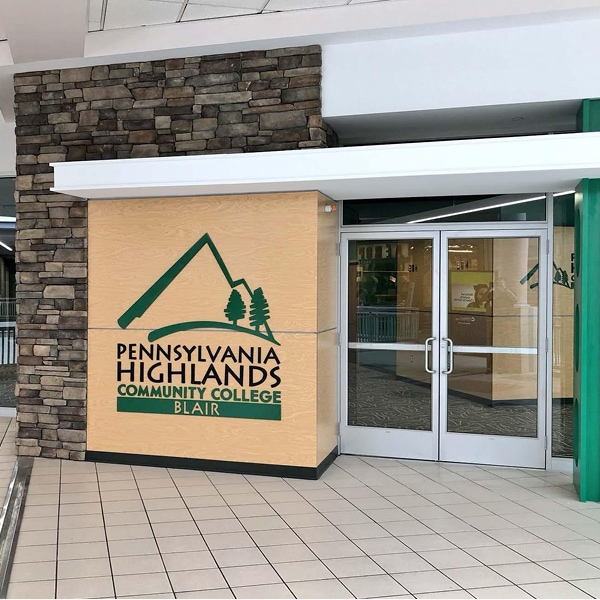Barbara Zaborowski, Ph.D. is the Dean of Learning Resources and Special Assistant to the President at Pennsylvania Highlands Community College. Here’s how she and her colleagues have used PA Stop to enhance their work.
1. Tell us about your organization. What do you do? Who do you serve?
The Pennsylvania Highland Community College is my employer. Pennsylvania Highlands serves the six counties, of the southern Alleghenies area. For the purposes of PA stop, we reached out to all the libraries in just Cambria County.
Cambria County ranks second in the state for opioid overdoes, so we needed to do something. We needed to provide support materials for people who experienced overdose in their lives.
We applied for and received funding for this project through the National Network of Libraries of Medicine of the Mid-Atlantic Region.
We had a great committee who looked over the materials before we even got involved in the grant. That great community that made this possible! We had the Cambria County Drug Coalition and the 1889 Foundation, which supports public health efforts near Johnstown. We also had support from the Cambria County District Attorney’s Office. Of course, we had all the public and college libraries on board. Our very first group meeting was actually in fall 2017. It was an extensive committee: the need is so great.
2. How long have you been using PA Stop in your work?
Since we applied for funding in January of 2018, in April we’re just now receiving some of the materials we ordered. We have pop up posters and magnets, we’re still finishing the printing of multipage handouts.
3. Tell us about some of the ways that you have utilized PA Stop to spread information about opioids.
Libraries are trusted resources. It’s a safe, non-threatening environment. People come here for answers, and they know the information has been vetted. We’ll get, say, the grandmother who’s now raising her grandchildren because her son or daughter overdosed. And they’ll be trying to help that child understand, but there’s a lot they need to understand themselves.
The majority of our project’s distributable materials come from PA Stop. We also got materials from the National Library of Health, and some local sources. A local author wrote a book for children that helps them understand losing somebody to an overdose. The materials we have in the collections include early childhood and teens, and all the way through to adult. It’s a comprehensive collection of materials, and we’re developing a website with links as well.
We had a full-day training with St. Francis University, through their School of Public Health. We had 25 people at the training. One of the presenters worked at Pyramid Healthcare. He has fifteen people he’s working with for opioid addiction, and before coming to speak to us he asked them a question—had they ever shot up in a library? They all said yes. That was a really powerful message to us: Don’t think this can’t happen just because you’re a small library.
We trained the library staff through the National Library of Medicine. They learned about how to work with people who come in and request the materials. When they have someone come into the library, librarians can point them toward those resources and talk to them without being judgmental.
We’re going to be collecting statistics. We’re going to ask the libraries to count the racks of materials. That lets us track how fast they go through materials. We can track how many times related books in our circulation system go out.
If it’s successful, we’ll seek a second round of funding. Then we can order more materials, conduct more outreach, and train more people. Looking forward, we want to get students working toward substance use certificates or social work degrees in libraries to answer questions.
4. What do you think are the most exciting or successful ways that PA Stop has helped you achieve your mission?
Just having it all ready and prepared! We didn’t have to prepare anything, which was incredibly important. I didn’t have to conduct the research and make brochures on my own.
We ordered printed pamphlets, magnets, and popup displays. I put one popup in the public library and Cambria’s three colleges’ and universities’ libraries have them too. We got our logo and website on everything, we had it all personalized, which was great.
The magnets are a funny story. Grants like this don’t usually allow for the purchase of promotional materials. But I put them in the grant anyway. I got a phone call saying we needed to remove them from the application. I argued for the magnets—they’re providing the exact same information as a pamphlet, just in a different format. People will put them on their fridge and see them for months. A pamphlet is more likely to just get thrown away. We got the funding for the magnets.
5. We are trying to help organizations and Single County Authorities understand how they can use PA Stop in their communities. Do you have any advice or words of wisdom, based on your experience?
The most important thing is to get this information into as many hands as possible. Think of nontraditional places to share information—libraries, churches, schools. When I listened to all the discussion in the news about opioids and addiction in Cambria, it became very important to me. And for libraries, information is what we do. One of them most powerful PA Stop billboards is “Anyone Can Become Addicted.” Because the first reaction from people is, it’s not going to happen to me or anyone I know.



